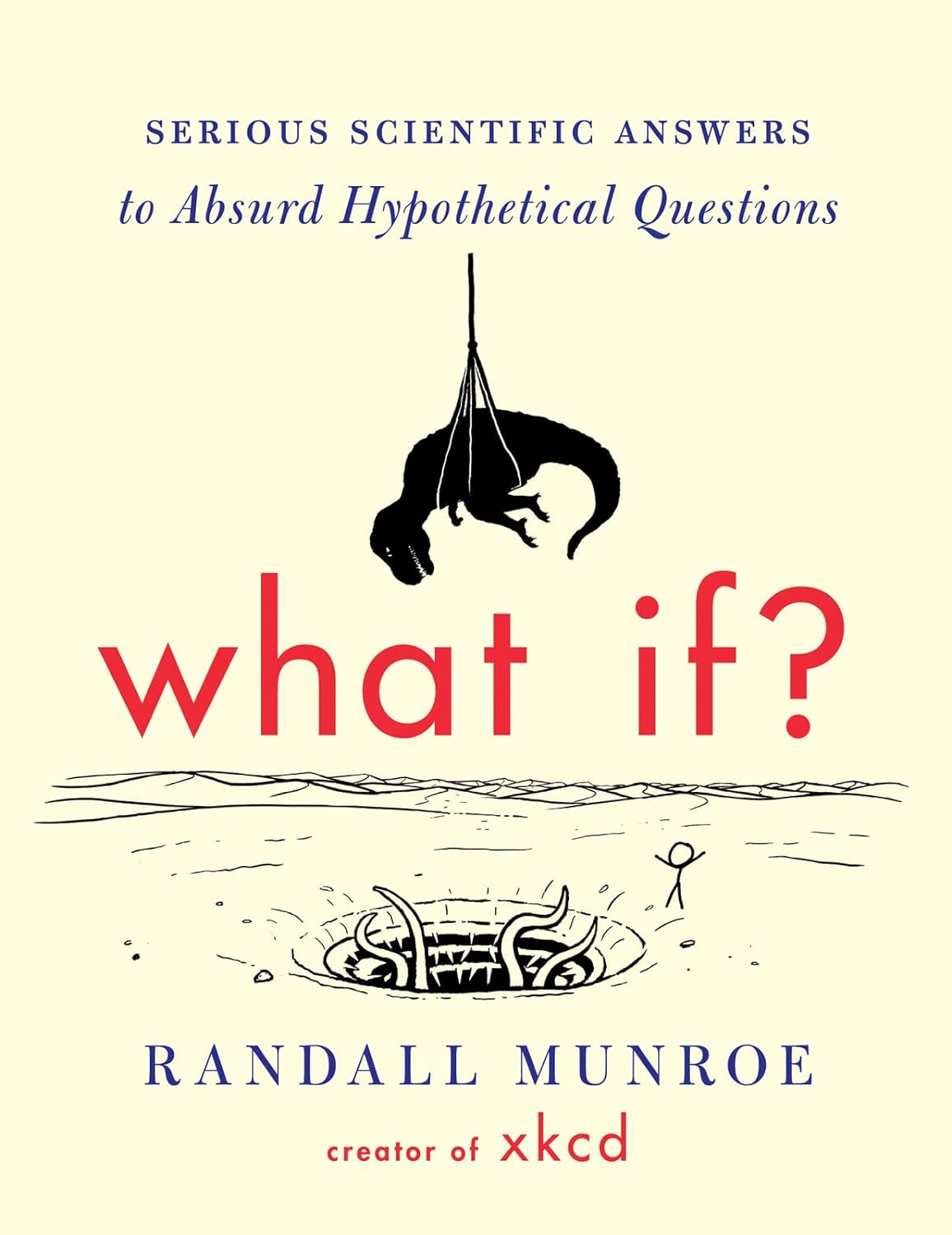As an avid reader with a penchant for all things quirky and scientific, I couldn’t resist picking up What If?: Serious Scientific Answers to Absurd Hypothetical Questions by Randall Munroe. I’ve followed the xkcd webcomic for years and found its blend of humor, science, and stick-figure illustrations utterly delightful. Learning that Munroe crafted a book that answers bizarre questions using scientific reasoning piqued my interest even further. I was eager to dive into this uncharted territory of hypothetical scenarios and find out just what kind of craziness—and clarity—Munroe could conjure.
The book is brilliantly structured and visually pleasing, and it struck a perfect balance of humor and scientific insight. I was treated to answers to ludicrously intriguing questions, such as what would happen if you pitched a baseball at 90 percent the speed of light or how humanity might fare in the event of a robot apocalypse. Munroe’s knack for storytelling shines throughout, allowing complex scientific concepts to remain accessible, even for readers with a more casual interest in science.
One aspect I loved and that other readers have highlighted is Munroe’s simple yet effective writing style. He doesn’t shy away from diving into the nitty-gritty of scientific concepts but does so in a way that’s relatable and often laugh-out-loud funny. I found myself chuckling through sections while also being genuinely educated. As Dr. Beverly R. Vincent mentions in her review, Munroe’s responses are beautifully clear and loaded with humor, often culminating in fantastical scenarios that result in catastrophic consequences—like the complete annihilation of humankind, but with a wink.
While the book is largely a triumph, there were a couple of drawbacks noted by other readers that I also encountered. For one, some might find certain questions uninteresting, a sentiment echoed in some reviews. While I personally found most questions engaging, I did encounter a few that felt more tedious than amusing. For example, the exploration of some scenarios, while scientifically grounded, occasionally went on longer than necessary for my taste.
Moreover, some readers had mixed feelings about the book’s length—again, I fall on the side of enjoying its detail, but I can see how others might feel that a few answers were stretched. Munroe dives deep, often extrapolating far beyond the initial question, which isn’t always to everyone’s taste. Still, I appreciate the methodical research he puts in—piling through declassified documents and running simulations—to provide thoughtful insights.
One delightful surprise for me was the attention Munroe paid to the visual elements of the book. The illustrations are not merely decorative but augment the explanations nicely. His iconic stick figures deliver punchlines that solely text could never achieve, resulting in an experience that feels complete.
While some questions may have made me ponder deep life truths—like the existential musings on soulmates that prompted reflection—this is what made What If? well worth the read. It invites the audience to engage not just with scientific concepts but also with their own interpretations of reality.
In terms of who might enjoy this book, I’d wholeheartedly recommend it to anyone with even a passing interest in science, or to those who enjoy light-hearted reading laced with educational gems. It appeals to a broad audience, ranging from families looking to introduce science in a fun way to adults wanting a good laugh alongside their learning.
In conclusion, What If? met all of my expectations and provided a delightful mix of entertainment and knowledge. Munroe’s signature style made complex science approachable, and I emerged from its pages not only amused but also with a mind bubbling with curiosity. Whether you’re a longtime xkcd fan or just someone intrigued by the absurd, this book is bound to entertain. I’d recommend grabbing a copy—just don’t try to recreate any of Munroe’s experiments at home!








